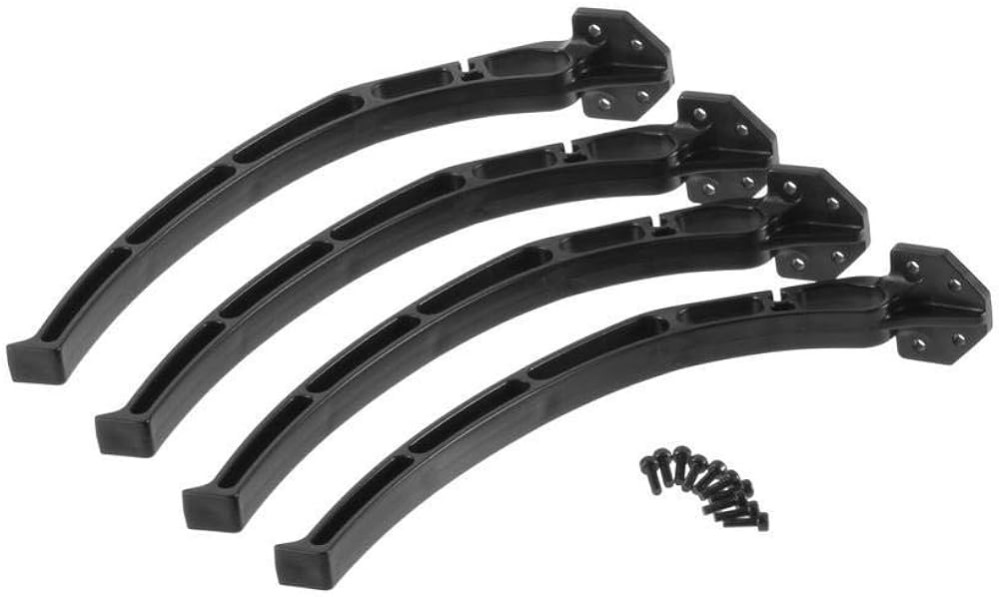





LANDING GEAR
Description: Application: Landing gear is designed for use with quadcopters and drones of various sizes and configurations. It serves as an accessory to protect the drone during takeoff and landing. Material: The landing gear is made of plastic, which is lightweight and durable.
₹ 260 ₹360
360
Add FAQ
Landing gear is a crucial component in drones and other aircraft, designed to support the vehicle during takeoff, landing, and when stationary. It is responsible for absorbing impact forces during landing and providing stability when the drone is on the ground. For drones, landing gear typically comes in several types and configurations, depending on the drone's size, purpose, and design.
Types of Drone Landing Gear:
-
Fixed Landing Gear:
- This is the simplest and most common type of landing gear. It remains in a fixed position and does not move or retract. Fixed landing gear is easy to install and maintain, and it’s typically found on small to medium-sized drones.
- Advantages: Simple design, low weight, inexpensive.
- Disadvantages: Increases the overall size of the drone, which may affect aerodynamics and efficiency.
-
Retractable Landing Gear:
- This type of landing gear can be retracted into the drone's body during flight, reducing drag and improving aerodynamics. It’s commonly used on larger drones and professional-grade drones like those used for aerial photography and cinematography.
- Advantages: Improved aerodynamics during flight, reduced drag, and sleek look.
- Disadvantages: Adds complexity and weight, higher cost, and may require more maintenance.
-
Skid-Type Landing Gear:
- Skid-type landing gear is a common feature on quadcopters and multi-rotors, where the drone rests on two or more skids that provide stability. It’s lightweight and simple to design.
- Advantages: Lightweight, cost-effective, and easy to install.
- Disadvantages: Provides less shock absorption compared to other types, limiting its use in rough landings.
-
Leg-Type Landing Gear:
- This type of landing gear features multiple legs that provide a more stable base and can absorb more impact during landing. This configuration is common for larger drones and commercial drones.
- Advantages: More shock-absorbing than skids, better ground clearance, stable support.
- Disadvantages: Heavier, may affect portability.
-
Shock-Absorbing Landing Gear:
- Some landing gear systems are designed with built-in shock absorbers (such as rubber or springs) to reduce the impact forces during landing. This is useful for drones that carry heavy payloads, as it helps protect sensitive equipment, such as cameras or sensors, from damage.
- Advantages: Protects the drone and payload, better for rough landings or when flying on uneven surfaces.
- Disadvantages: Adds complexity and weight, requiring additional maintenance.
Features of Landing Gear:
-
Material:
- Plastic: Lightweight, inexpensive, but less durable in rough landings.
- Carbon Fiber: Lightweight and strong, providing durability while minimizing weight. Ideal for high-performance drones.
- Aluminum: Durable and strong, but slightly heavier than carbon fiber.
- Rubber: Often used in the shock-absorbing parts of landing gear to provide cushion during landings.
-
Ground Clearance:
- Good landing gear will raise the drone’s body off the ground, ensuring the motors and propellers remain safe from debris or rough terrain. Adequate ground clearance is crucial for protecting the drone's components during landing.
-
Size:
- The size of the landing gear depends on the drone's weight, size, and design. Larger drones with heavier payloads generally require larger and more robust landing gear, while smaller drones may only require simple, lightweight landing systems.
Choosing the Right Landing Gear for Your Drone:
- Drone Size and Weight: Larger drones carrying heavy payloads need more substantial landing gear that can absorb more shock, while smaller drones can get by with lightweight skids or compact fixed landing gear.
- Flight Style and Environment: If you fly in environments where rough landings or off-terrain use are common, landing gear with shock-absorbing properties is a better choice.
- Aerodynamics and Efficiency: If your drone needs to be as aerodynamic as possible (e.g., for racing), retractable landing gear or lightweight fixed gear will be preferable to minimize drag.
- Durability: Consider the material and build quality. Carbon fiber or aluminum landing gear is better for durability in rough environments, while plastic gear may be more cost-effective for lighter drones.
Popular Landing Gear Options:
-
Fixed Skid Landing Gear:
- Often used on small quadcopters and toy drones, this type of landing gear is very basic but effective. It’s usually made of lightweight plastic or rubber and is easy to replace.
-
Retractable Landing Gear:
- Common on high-end drones used for filmmaking, such as the DJI Inspire 2. These landing gears retract during flight to improve aerodynamics.
-
Shock-Absorbing Landing Gear:
- Available for commercial drones and heavier payload drones. This type of gear is designed with springs or rubber to reduce the impact during landing, protecting cameras or other delicate equipment.
Conclusion:
Landing gear is an essential part of drone design and functionality, ensuring that the drone remains stable and protected during takeoff, landing, and while stationary. The best landing gear type for your drone depends on your drone's size, purpose, and operating environment. Whether you opt for simple skid-type landing gear, retractable gear for aerodynamic purposes, or shock-absorbing legs for rough landings, the right landing gear ensures the safe operation and longevity of your drone.
0 Reviews For this Product






.jpg&width=225&quality=80)






